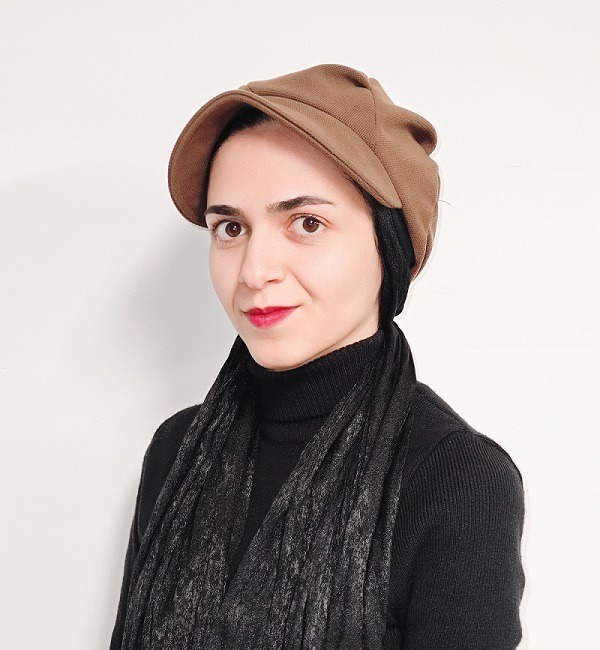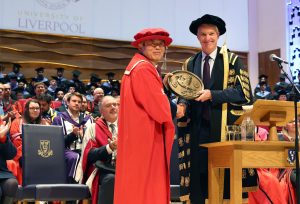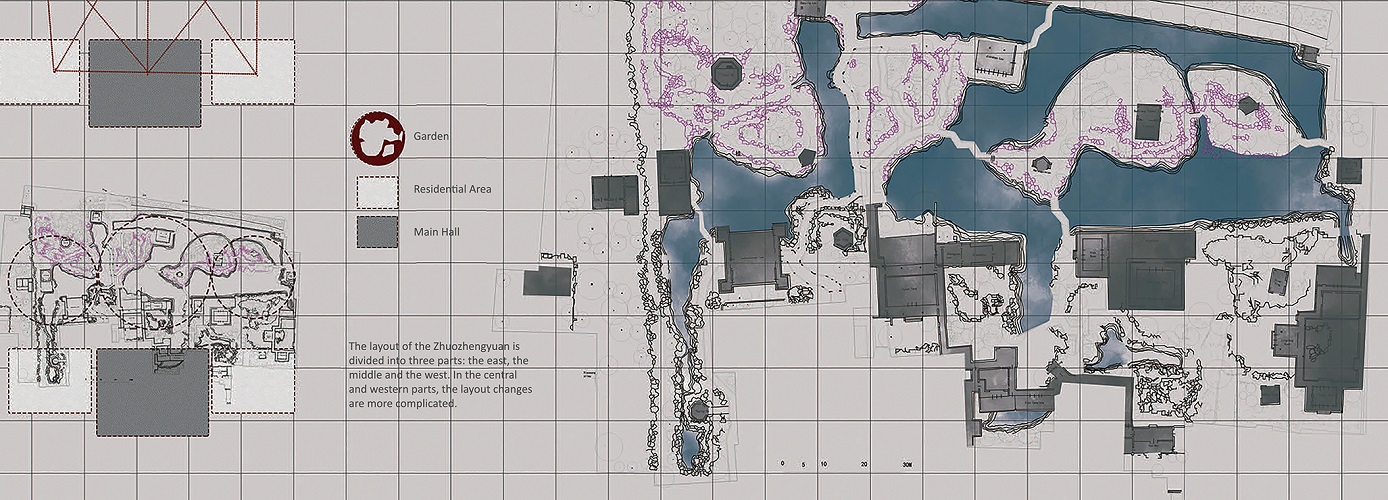
Aanuoluwapo Aderonke Oguntade
Performance and Parametric Design Optimization of Semi-Transparent Building-Integrated Photovoltaic Façade in Different Climatic Regions
The use of semi-transparent BIPV is on the rise. Much research has been conducted to determine how semi-transparent BIPV affect building thermal, visual, and electrical performance. From previous studies, no research has been optimized for maximizing energy generation and visual and thermal comfort while reducing building energy consumption, cost, and environmental impact; also, many focused on one single mode of BIPV application. Therefore, this research will examine the thermal, visual, electrical, cost and environmental performance of semi-transparent façade in the five climatic regions in China. While building performance simulation can be utilized to examine the thermal, visual, electrical, cost and environmental performance of a semi-transparent façade, carrying out such analysis for several design alternatives to determine the most optimized design can be time-consuming. Therefore, this research also seeks to develop a multi-objective parametric optimization tool that simplifies this process, reduces the simulation time and makes the results easier to interpret for easy decision-making for all the stakeholders.
The thermal, visual, electrical and environmental performance of the semi-transparent BIPV façade will be examined using a set of simulations encompassing different building types and climatic regions. The models will be calibrated using measured data from the different case studies with semi-transparent BIPV in China to validate the simulation results. The outcome of this research will provide information on how semi-transparent BIPV façades affect building energy efficiency in different climates. It would also provide information on the role of semi-transparent BIPV façades towards attaining net-zero energy and net-zero-carbon buildings in China. It would also create a parametric design optimization tool that helps designers quickly examine multiple objectives (façade radiation analysis, PV electricity generation, thermal and daylighting performance) to determine the best design option.

Yuhan Li
Fractal-Based Computational Design and 3D-Concrete Printing of Extra-Light Porous Panels for Building Applications
The quest for sustainable and efficient construction methodologies has led to the exploration of 3D concrete printing (3DCP) for architectural components. However, conventional 3DCP techniques have not fully realized their potential in prefab construction due to limitations in material optimization and structural design, especially when considering complex and intricate geometric forms . This research proposes an innovative approach to 3D concrete printing (3DCP) in architecture by integrating fractal geometry and space-filling curves to enhance the design of architectural components, specifically structural components such as walls, beams, and columns. The goal is to improve structural stability and sustainability by optimizing material usage and leveraging the inherent properties of fractals. Unlike traditional 3D printing techniques, where the path within a layer is uniform and limited, the introduction of fractal geometry allows for intricate printing paths and varied layer densities. This enables control over the porosity and microstructure of the printed panels, which can be fine-tuned to achieve desired functionalities such as improved thermal insulation, acoustic absorption, and reduced weight—thus pushing the boundaries of what is achievable with 3DCP in architecture. The study employs a literature review to explore fractal curves, followed by digital design using parametric tools; this also involves structural analysis and building environmental performance optimization. The panels are then fabricated using robotic 3D printing, with a focus on achieving a balance between structural requirements and sustainable performance. The expected outcomes include the creation of lightweight panels with controlled porosity, which contribute to material conservation and offer improved thermal and acoustic benefits. This research aims to advance digital design techniques, optimize fabrication processes, and innovate material usage, leading to a new standard in sustainable and efficient construction practices. In conclusion, the ability to control the printing path and layer density through fractal curves opens up new possibilities for architectural design, material science, and sustainable building practices, potentially redefining the construction industry’s approach to prefab components.

Zhehui Chen
Enhancing Timber Construction Efficiency through BIM and Animation Technologies: A Sustainable Approach
Timber construction presents a promising avenue for sustainable building practices, particularly in rapidly developing regions like China, where urbanization drives demand for efficient and eco-friendly construction methods. The research will first investigate current trends and challenges in timber construction within the Chinese context, focusing on environmental impacts, technological adoption, and regulatory frameworks. Subsequently, it will look into the application of BIM in timber construction, emphasizing its role in optimizing design, reducing material waste, and improving construction management. Moreover, the project will explore integrating animation technologies such as AR and VR into the timber construction workflow. These technologies will be studied for their potential to enhance visualization, simulation, and on-site construction processes, thereby facilitating better stakeholder communication and decision-making. The expected outcomes include a comprehensive framework for implementing BIM and animation technologies in timber construction projects tailored to Chinese market conditions. This framework aims to streamline project workflows, enhance sustainability metrics (such as carbon footprint reduction), and improve overall project outcomes regarding cost-effectiveness and quality. This research seeks to contribute practical insights and guidelines that can empower stakeholders in the Chinese construction industry to adopt advanced technologies effectively, thereby promoting sustainable development.

Farkhondeh Vahdati
Holographic Construction in Design for disassembly inspired by Iranian timber structures
This project investigates holographic construction support for a structural digital model made from timber. Potential outcomes include a holographic construction framework tailored for circular design principles and a specific Augmented Reality (AR, henceforth) interface introducing Design for Disassembly (DfD) during the early design process. The project’s objective is to explore ways to construct by augmenting the physical world and digital data, with the main agenda of how these construction techniques can be incorporated into early design stages in Circular Design. With this in mind, this Ph.D. project serves as a point of departure to insert adaptation of CE in architecture design to the preliminary stage of the design phase.

Ziyue Zeng
Integrated design generation and optimization for early-stage building massing and spatial layout design
The application of computational design optimisation (CDO) has attracted considerable attention in the field of performance-driven building design research. Among the key areas of interest are the reduction of building heat loss through the optimisation of the building’s external design, allowing the building to benefit from the site environment and achieve self-shading. However, the majority of existing research has focused on the optimisation of building massing (the building’s external form). This narrow focus often results in compromises to other architectural elements, particularly the interior spatial layout of the building. Consequently, in order to utilise CDO in architectural design, further research is required to ascertain the most effective methods of doing so. It is important to promote the use of CDO for building environmental performance at the earliest stages of architectural design refinement, while integrating the treatment of the building’s building massing and interior spatial layout. This project focuses on an environmental performance-oriented CDO system that integrates the building massing and spatial layout of a building at an early stage of architectural design. The objective is to allow CDOs to modify the building’s exterior form to improve environmental performance while finding a rational design for the building’s interior spatial layout based on the building’s functional needs. This study initially examines architects’ perceptions of the connection between building form and interior spatial layout in the preliminary stages of architectural conceptualisation. The objective is to summarize the design strategies and principles employed by architects in the initial stages of conceptualizing buildings with different functional needs. This summary will then be used to create a CDO system. The system is designed to modify the building massing of a building to improve its environmental performance while simultaneously finding a rational design for the interior spatial layout according to the functional needs of the building. This process is expected to result in a series of design iterations with rich diversity and variability regarding building massing forms and spatial layout configurations. The ultimate outcome of this research will be the development of a design tool that will enable architects to explore optimal design solutions for both exterior form and interior spatial layout at an early conceptual stage, while being guided by the building’s environmental performance. This will assist architects in pursuing design development and improvement driven by building environmental performance, allowing them to explore creativity while navigating the building’s need for environmental performance.

Yue Zhu
The contemporary and cross-cultural interpretation of Jiangnan heritage: A case study of new architecture in Suzhou and Hangzhou

Lok Hang Cheung
Conversational Architecture: Artificial Intelligence Application in Human-computer Interaction-based Architecture
Human-computer interaction (HCI) has been explored in the architecture discipline since the 1960s. It stated that humans and architecture (as machines) are both designers.
Despite thriving technological development, essential HCI elements such as interactivity, complexity, and physicality are lost despite thriving technological development. The “Conversational” properties which Pask (1969) envisioned have not been developed practically.
By introducing AI into the architecture discipline, this research proposes Conversational Architecture from two perspectives: AI-integrated architecture (built environment) and AI-integrated architectural design process.

Abeeha Awan
Architecture Assembly: Mobilizing a Community through Gamification
The research topic at hand focuses on the efficacy, utilization, and applications of gamification and game design in introductory design-based educational environments with special attention paid to factors related to student engagement, retention, and performance. The research posits an evidence based approach and design process centered around the conjunction of “game design” principles and “gamified” learning utilized in combination to teach and impart foundational design skills and experience. In addition, the efficacy and impact of advancing immersive technologies in the design space such as augmented and virtual reality are studied in order to aid future development of gamified tools. The thesis centers around studying, designing, and testing the impacts and effects of gamified and game based components through findings ascertained from a cumulative survey of existing literature and data-driven research conducted through a module-focused workshop. Overall, the thesis aims to contribute an understanding of the efficacy, utilization, and potential future applications of gamified and game-based aspects in the introductory design space.

Yang Yang
Optimisation of Low-rise Prefabricated Lightweight Steel-Framed Residential Building Design in the Hot-Summer-Cold-Winter Region of China by Life Cycle Analysis
According to China’s policy and plan, the number of low-rise steel-framed residential buildings will keep increasing in China. On the other hand, the reduction of carbon emissions for the steel industry in China is asked to peak carbon emissions by 2030. Life Cycle Assessment (LCA) is an efficient tool for reducing energy consumption and carbon emissions in buildings, ensuring the avoidance of burden shifting among different stages of the building’s life cycle. However, there is limited research focusing on how and what design variables of LSF houses can potentially contribute to energy saving and emission reduction in the whole building life cycle in the hot-summer-cold-winter (HSCW) region of China, where the number of low-rise LSF houses is expected to increase. Thus, this research aims to optimise the most significant design variables of low-rise LSF residential buildings in the HSCW region of China by using LCA.

Yifei Li
Space with Distinction: contextualizing the creative regeneration of industrial heritage in South China
This research explores the creative regeneration of industrial heritage in South China. Industrial heritage redevelopment in China has faced challenges in evoking place and cultural identities due to rigid cultural policies. In Shenzhen, a regeneration strategy integrating planning and spontaneity and driven by cultural events is effective in vibrantly reusing industrial heritage and transitioning to a post-industrial, information-based economy. The thesis uses Pierre Bourdieu’s concept of “distinction” to examine the relationship between space production and local culture. The theories help understand the valorization process of industrial heritage regeneration from a cultural and power relations perspective. By questioning deindustrialization and urbanization, the correlation between cultural production and consumption, heritage making and urban regeneration is revealed. The case study focuses on Shenzhen’s distinctive practice in the regional context of South China.

Chitraj Bissoonauth
The Distinction between Epistemic and Pragmatic Actions in Digital Design Toolmaking
Language use, tool use and tool making are often-cited capabilities that set us humans apart from other animals. Accordingly, the activities of tool use in design and tool making for design are inextricably related to how we see ourselves. This PhD project investigates these activities by testing related theory. In particular, it tests a previously established distinction between pragmatic and epistemic kinds of action. In a seminal 1994 article entitled On Distinguishing Epistemic from Pragmatic Action, David Kirsh and Paul Maglio reject linear models of planning and execution in favour of a non-linear theory that recognises the purpose of some actions as epistemic (as opposed to pragmatic) and, in this way, as a part of planning rather than execution. Kirsh and Maglio derive their findings empirically in the context of closed-ended problem-solving. This study tests Kirsh and Maglio’s distinction between epistemic and pragmatic action in the context of open-ended problems, i.e. designing. A small sample of designers will be observed individually while completing a design task in the area of architectural geometry rationalisation. The study employs concurrent video protocol analysis to test if epistemic and pragmatic actions occur separately in the open-ended context of digital design toolmaking. Findings generated from this investigation are expected to inform academic research into digital design toolmaking as well as in architectural design practice, both informing and offering insights into an emerging industrial specialism.

Mengfan Jin
Multi-scale Rapid Energy Modelling of Existing Residential Buildings in HSCW zone
Energy modelling of existing buildings has a number of applications, which include energy efficiency and sustainability diagnosis, assessment and certification, retrofit design, development and configuration of advanced control systems, smart city and smart grid applications, and building stock simulation to inform policymaking. One of its drawbacks is that geometry usually has to be modelled from scratch, resulting in increased working time and costs. If building plans are incomplete due to expansion and refurbishment, modelling can be complex and inaccurate. Furthermore, Urban Building Energy Modelling has always been challenging due to the huge number of buildings at the urban scale and the trade-off between accuracy and speed in the simulation process. The research aims to investigate multi-scale rapid residential building energy modelling in Jiangsu Province, and develop an innovative methodology which integrates UAV, photogrammetry and image processing while achieving low requirements for known data and a highly automatic process simultaneously.

Daniela Marilu Pico Perez
Landscape Architecture between Identity, Place and Memory: Design Strategies for Recovering Obsolete Productive Spaces in Shanghai, China
The research focuses on urban regeneration strategies for recycling and reuse of obsolete productive spaces identified as “residuals”. The accelerated transformation of contemporary cities, especially in China, is producing changes in physical and cultural landscapes, generating complex relations between architecture and habitat. Residuals represent traces of social activities, although they are in a fragile and unfinished state. They offer opportunities for innovative design solutions that enable new sustainable forms of living. The research aims to analyse relevant academic discourse and case studies generated in the milieu of residuals regeneration with a landscape approach. Finally, aiming to bridge the gap between the theoretical discourse and the design practice by developing a set of possible actions and design strategies as a support tool in the design of future interventions in the context of China.

Homan Yau
An AI-based Approach to Timber Joints Design and Fabrication Using Machine Learning Algorithms
Timber is recognised for its renewable and low-environmental impact material in the construction industry, with historical use across various cultures. With the development of the timber manufacturing industry, machinery can fabricate complex timber structures, further enhanced by parametric modelling and robotic applications. This research aligns with global sustainable goals, the reduction of the greenhouse effect, and innovative industrial practices. This research investigated the possibility of using graph-based theory applications to analyse timber joint connections for timber frame structures. This project will develop a machine learning system to deliver more efficient timber frame structures, with three stages: data collection and analysis, machine learning generator development, and a timber joints generative system. The process includes studying the traditional craftsmanship of joints through shape grammar generative system, graph-based theory analysis system for machine learning applications, and structural performance testing of the fabricated joints. The project combines traditional woodworking techniques with advanced machine learning applications to innovate timber construction.

Yusu Chu
Study on Industrial Transfer and Suburban New Town Spatial Forms Under Morphological Methods: Theoretical Exploration and Empirical Application
Although Shanghai’s “One City–Nine Towns” (OCNT) was intended to promote stylistic and functional diversity in suburban development it has been widely criticized for the disconnect between its planned typologies and real-world spatial performance. This study investigates this spatial system from a morpho-typological perspective positioning OCNT as a critical case for understanding new town development in China. Existing studies often overlook the role of spatial form itself in shaping these outcomes. This study adopts a multi-scalar analytical approach—macro (urban structure) meso (block pattern) and micro (plot and building typologies)—to trace the evolution of spatial forms using GIS-based historical mapping typological classification and topological network analysis. The goal is to develop a morpho-typological analytical framework grounded in morphogenetic theory to examine the spatial formation and functional transformation of Chinese new towns. By localizing Western morphological theories within China’s institutional context this study contributes a new analytical toolset for understanding suburban urbanization and proposes a strategic approach for harmonizing planning intentions with lived spatial form realities.

Yixuan Wang
AI-Driven Digital Twin Framework for Smart Building Automation and User-Centred Renovation
The global trend of urbanization coupled with resource scarcity has emphasized the need for innovative solutions to improve building automation. This research explores how Digital Twin (DT) technology enhanced with Artificial Intelligence (AI) can provide real-time simulations and predictive models for more efficient building automatic control systems. Leveraging a combination of building information modelling (BIM) deep learning and game-engine technology the research creates a dynamic and participatory renovation framework. Wearable sensors and environmental sensors are used to collect personal thermal comfort data and environmental conditions. This information is used within a Digital Twin platform to predict human needs and automatically control building facilities ensuring the indoor environment meets every user’s requirement. By investigating AI’s role in optimizing renovation processes and stakeholder engagement the study enhances the lifecycle performance of buildings while promoting sustainability data security human comfort and overall renovation quality.

Yutian Yi
Distributed Ledger Technologies enabled Digital Twins Application for Enhanced Lifecycle Management in Building Handover
Digital Twin technology ensures the real-time data capturing and monitoring while Blockchain guarantees traceability transparency and tamper-proofing of information. This project explores the complementary features of Digital Twins and Blockchain concerning real-time trust and governence assessment and it advocates for their joint implementation to enhance building lifecycle management. Through this integration the building data can be recorded by multiple parties ensuring their authenticity and integrity via the tamper-proof features provided by the Blockchain thus ensuring that every step of the building lifecycle can be controlled with the advantages of reducing trust-related costs and achieving simplified processes and data security. The research utilises qualitative and quantitative methods to develop a prototype ofbintegrating Blockchain and Digital Twin within the AEC realm to concentrate on the effcient management and continuity of pertinent data to make advance in effective management and decision-making especially when the building is in use.





Please click here to find PhD Scholarship Opportunities.